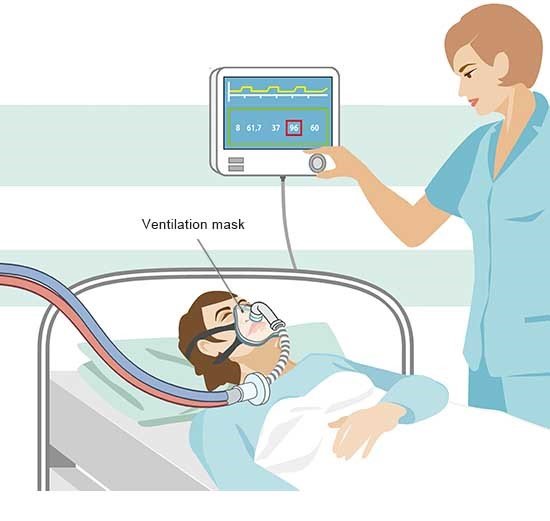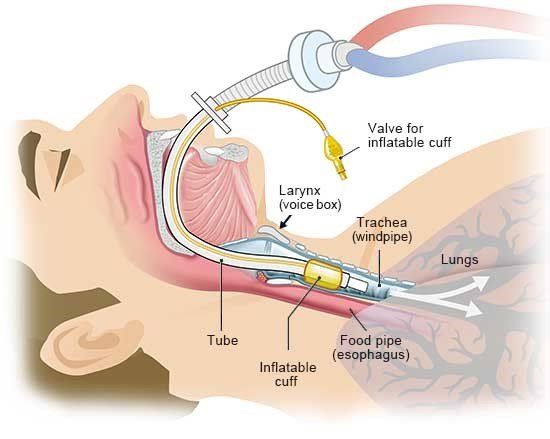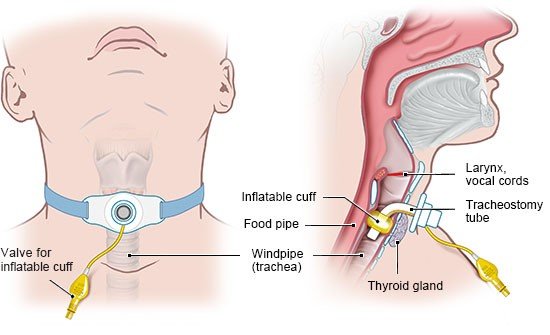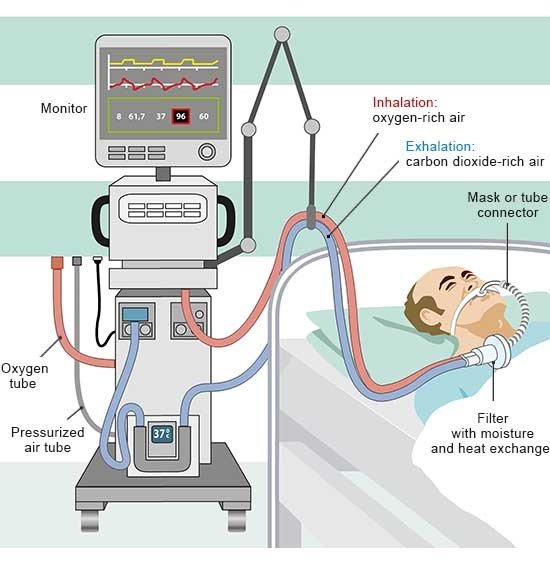What are the various types of ventilation?
In non-invasive ventilation, a mask is placed on the face to firmly cover the mouth and nose. The mask is connected to a ventilator which constantly provides fresh, oxygen-rich air to the airways.
Invasive ventilation provides air through a flexible tube rather than a mask. The technical term for it is a tracheal or endotracheal tube. Doctors also call this "intubation" because a tube is used. The tube is connected to the ventilator and feeds oxygen-rich air directly into the windpipe.
In invasive ventilation, the patient has to be under anesthetic. The tube is only inserted into the windpipe once the anesthetic has started to take effect.




